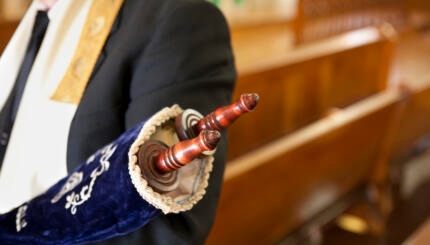Recently, a new artisan storefront opened near my Main Street home. As I like to support local artisans, I wandered in for a look. “Our name is Just Jewellery,” said the salesperson. “We specialize in silver and semiprecious stones, featuring the work of several local artists…”
But I could not focus on her words. Instead, images of divinity overwhelmed me. I saw Ganesh, Hindu god of wisdom, carved in jade; Buddha, sculpted in a granite-like paste; a Kabbalistic network of triangles drawn with sparkles; a Cross embellished with garnet; a bold Indigenous Eagle, etched in silver.
This store was a festival, but I was not sure what kind. A deeply multi-faith festival, celebrating devotional artistic intent? Or a superficial spiritual-not-religious marketplace, baiting buyers with aesthetic beauty?
“Please, take a closer look at something,” the seller begged, “Even if you don’t want to buy today!”
So I looked, and I bought a pendant: a silver tree, with flowing roots and branches, reaching down to earth and up to heaven. Etched around the tree were Sanskrit words. It seems the artist had meditated on the ashwattha tree from the Bhagavad Gita, the banyan tree whose expansive growth symbolizes the ever-expanding universe.
But my mind transmuted the words into Hebrew.
Trees are classic Jewish symbols. Etz chayim hee, we say of the Torah: she is a tree of life. During the Omer season, we reflect on the tree of sefirot, pausing to note seven spiritual fruits. This week in synagogue we read from Parshat Tazria – literally “sprouting” but in context, “giving birth.” Variations on the root zera, seed, appear ten times in Genesis chapter one, celebrating the unpredictable nature of growth.
My desire to read the symbol as Jewish surprised me. Given my theology, I should not care whether a spiritual symbol is Jewish or not.
God is, in Kabbalistic Hebrew, Eyn Sof, Infinity. All human expressions of spirituality circle within the Infinite God. Every religious word, concept, sound, or ritual may turn us towards God, but cannot fully encompass the divine. God is, as Father Matthew Fox might say, the “one river” of spirit, bubbling up in “many wells” of tradition. God is, as depth psychologists say, “psyche” — a totality of all possible experiences and influences. Psyche surrounds us, appearing to us as consciousness, while also directing us beyond consciousness. God is, as I learned in yoga, Brahman, infinite energy, mirrored in atman, the individual soul.
A tree growing deep into the human heart and reaching for a higher reality could express any of these teachings. And each teaching points to the others.
So why do I feel drawn to a Jewish interpretation of the tree? Even though it may not reflect the artist’s intent?
The tree is a beautiful spiritual symbol. And I want to broadcast the beauty of my own spiritual tradition. I love to say that our living tree of Torah nourishes us, that spirituality grows like a healthy tree, that growth is filled with surprises. In my imagination, friends and acquaintances say, “What a beautiful pendant!” And, in response, I teach Jewish ideas about the Tree of Life.
This artisan store is badly named. It is not about “just jewellery.” It also raises questions of universality and particularity. Questions about cultural appropriation and group loyalty. Is it really okay for me to read an Etz Chayim into a banyan pendant? But if I don’t reinterpret it, can I wear it?
I confess, beauty has seduced me into an impulse buy. But beauty has also seduced me into some big questions. And this third week of the Omer, focused on the sefirah of tiferet (beauty) is a good time to be directed by beauty.
Photo credit: Laura Duhan Kaplan
Torah
Pronunced: TORE-uh, Origin: Hebrew, the Five Books of Moses.



